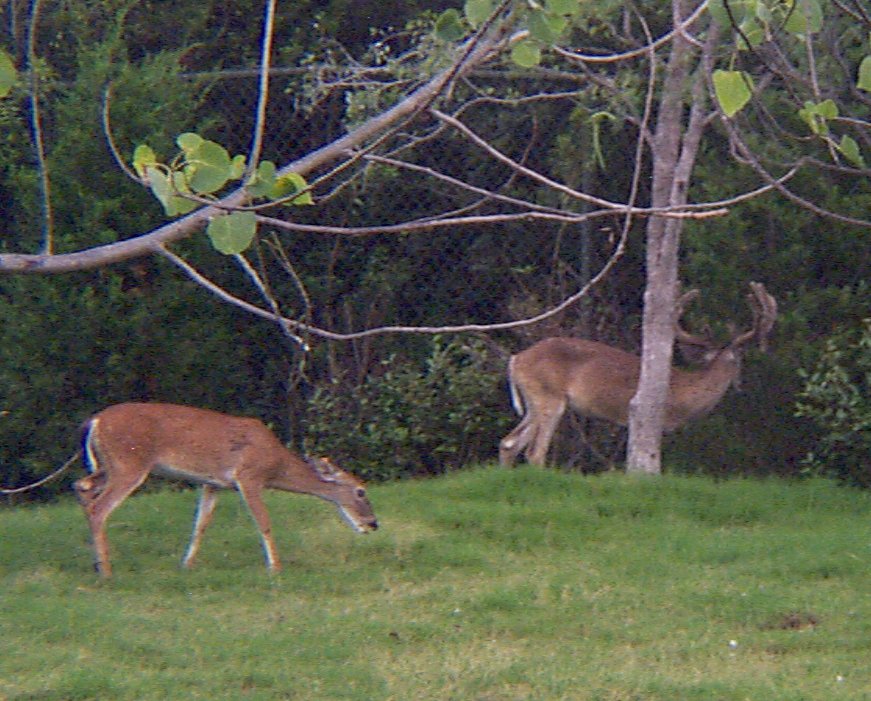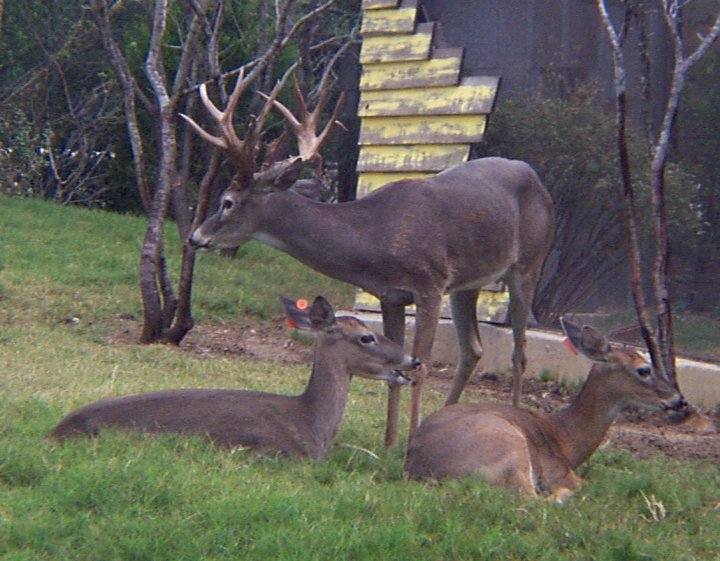White-Tailed Deer
Physical
description:
|
| General
information:
Most of the deer are relatively solitary during spring time, but for the winter they gather up for the warmth. The females and the males usually only associate during mating season. They can reproduce one to three babies. The does mostly travel in the later part of spring to start mating. Deer often move often for the greatest distances in spring and fall. Most of the greater distances are done by the yearlings. As the female matures, her traveling decreases. The deer have a keen sense of hearing and seeing which protect them from predators. The white-tails are most likely seen during dusk time trying to find food and disappear at dawn. |
| Special
anatomical, physiological
or behavioral adaptations: White-Tailed deer can run rather quickly and jump really high due to the their long legs. Their speed decreases in the thick snow. Their ability to run fast is their protection against predators. Another defense is the antlers for the bucks. They learn to bump their enemy with the antlers to stab them. Most deer have to store up body fat for warmth since their coats are not thick. Some white-tails become pests because they go into people's gardens and eat their flowers. White-tails tend to go for the most nourishing foods so they become picky eaters. |
 |
Comments about the white-tail deer of the Fort Worth
Zoo:

The Zoo has an adult male and some adult females. The male is a potential breeder and has produced two young deers. |
Source Materials and Related Links:
|
|
Send E-mail to:Prettyml82@hotmail.com
|

WhoZoo Home